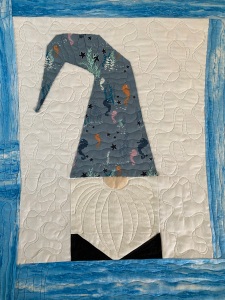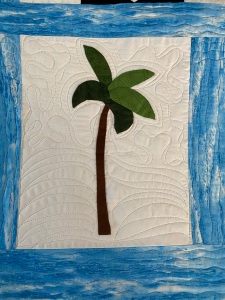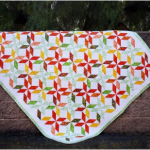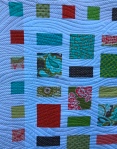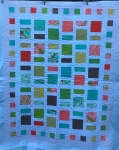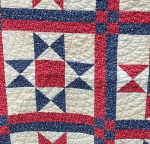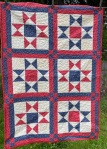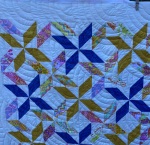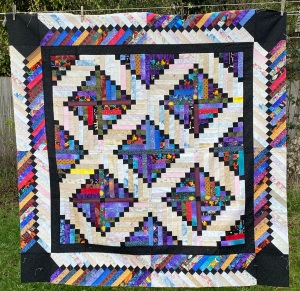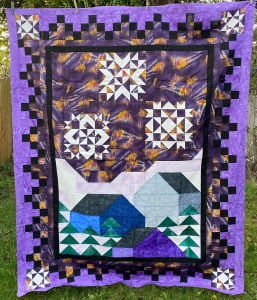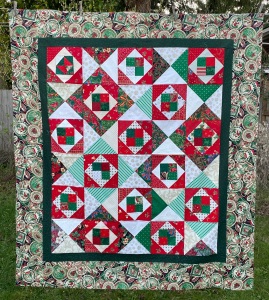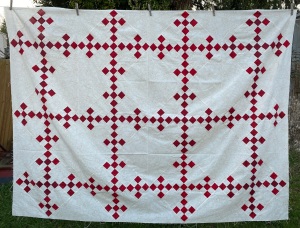Is Custom Quilting Dead??
August 7, 2021 1 Comment
Over the last few months I have heard the following comment (or something similar) several times from people in different parts of the country – “I’m not doing custom quilting anymore. I can’t make enough $$$ with custom quilting.”
Personally, I think they are WRONG! You CAN make $$ (many times a LOT of $$$) custom quilting, but you need to be SMART about it, you need to be EFFICIENT with your quilting, and you need to price accordingly.
Let’s first define “custom quilting.” A while back, I asked the question “how would you define the term custom quilting?” Everyone who responded said the same thing – anything more than edge to edge quilting, is custom quilting. (To read this post and the comments Click Here)
Let’s also define “edge to edge” quilting. Edge to edge quilting can be done with a (paper) pantograph, Groovy Boards, computerized or free hand. Edge to edge is quilting that is done from one (raw) edge of the quilt to the other (raw) edge of the quilt. And the pattern or design also goes from the top (raw) edge of the quilt to the bottom (raw) edge of the quilt. When the quilting is completed, there is typically only one distinct pattern or design on the quilt, resulting in all over “texture” of the quilting.
With many of the newer, more detailed and dense pantograph designs, especially some of the computerized designs, I personally feel, even though they are edge to edge designs, they really ARE custom quilting!
Personally, any quilting that is considered “custom” SHOULD cost more! And sometimes a LOT more!
Let’s talk about the quilting in custom quilting. I know everyone has seen the super duper, over the top, show stopping, drooling inducing, quilting. Maybe you have seen the photos online, in person or maybe you quilt like that in real life. Yes, these quilts are AH-MAZE-ING and prize worthy and, IMHO, should be charged big, big, bucks – like, there should be a comma in the price charged – for the time, talent, vision, imagination, and the effort involved in the quilting.
But what if you are working on something not so spectacular? You CAN do custom quilting and make some big, or at least decent, $$$ for YOUR time, talent and effort.
I just completed a “too stinkin’ cute” customer quilt with custom quilting that I completed in a fairly short amount of time and made some more than decent $$$ on it.
First, I want to talk about the quilt, then I’ll talk about the pricing.
The quilt is Gnome quilt that my customer made with Hawaiian fabrics for an island “vibe.” The quilt is going to be a gifted to a nephew and his family who live in Hawaii, and it is going to be hand delivered to them when a friend of my customer visits Hawaii on vacation in a few weeks.
The quilt pattern is A Tale of Two Gnomes, by Cotton Street Commons. My customer changed the pine trees from the pattern to coconut trees for the island vibe. Click on any photo for a larger view.
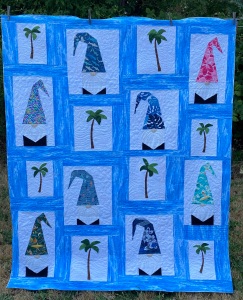
The quilt is 59 x 70 inches and the blocks are a combination of hand applique and piecing. At first I was thinking of doing a free hand all over design, but the applique on the trees was really thick and I couldn’t get my hopping foot or my needle through the thickness of the overlapping applique pieces.
I kept the “custom” quilting really simple and changed threads to match the fabric. I used high sheen polyester thread throughout the whole quilt and Warm & White batting.
I started with the blue borders – I went with a wavy line with blue variegated thread to mimic the motion of water. Because the blocks were all different sizes, where they all came together, I overlapped the horizontal and vertical wavy lines for a “fish net” look. The wavy lines overlapped somewhat randomly, meaning I didn’t plan or stress where the wavy lines overlapped in the quilt.
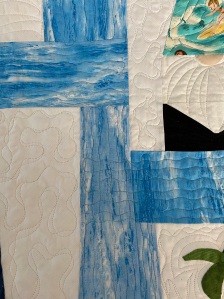
When all the blue was quilted in my workspace, I switched to white thread and did the background quilting of each block in the workspace. The white quilting in each block was done with only one start / stop and it was easy, peasy quilting – a combination of curved “spikes” in the beard and ribbon stipple in the background for the Gnomes and some curved spikes in the bottom half of the tree block and some loose outline and ribbon stipple around the top of the tree. It took me (literally) about 2 minutes to quilt the background in each block.
When the white quilting was finished in the first workspace, I changed back to the blue thread and quilted the Gnome hats then moved my quilt to the next workspace and began quilting the blue block borders and then the block background with the white thread. I continued “leap frogging” the thread colors in each workspace for the remainder of the quilting. I find that, for me, this is the most efficient way to quilt a quilt like this.
The whole quilt took me only three (3) hours to quilt which included putting the quilt on the machine. And, IMHO, the quilting looks good and it looks like I worked REALLY hard on it.
I have sent some photos of the quilting in progress to my customer and she LOVES the quilting!
This was a last-minute quilt that my customer made and asked if I could quilt it in only a few days. Fortunately for her, I had the time and I was able to do this for her. Because this was a rush job, AND a custom quilting job, I did charge more $$$ for my time and effort. Let’s talk numbers – the quilt was 59 x 70 inches which equals 4,130 square inches (si) and it took me 3 hours to complete.
4,130 si X .02 cents si = $82.60, divided by 3 hours equals $27.53 per hour
4,130 si X .03 cents si = $123.90, divided by 3 hours equals $41.30 per hour
4,130 si X .04 cents si = $165.20, divided by 3 hours equals $55.06 per hour
4,130 si X .05 cents si = $206.50, divided by 3 hours equals $68.83 per hour
I charged my customer the .05 cents si price, which she agreed to and signed and dated the worksheet!
Of course, if it took me longer to finish the quilt, the numbers would be different and I am not allowing for operating expenses, etc.
In addition, I provide the batting (Warm & White, twin size $22), thread (high sheen polyester, $10) and I put the binding on the front of the quilt ($53.75) and she will hand stitch the binding to the back. This gives a total of $292.25 for this quilt before state sales tax was added.
Custom quilting, IMHO, CAN BE PROFITABLE and by keeping the quitting simple, custom quilting can be done in a relatively / fairly short period of time which can make YOU more $$$.
I welcome your thoughts and comments. Please post your comments below or send them to me in an email at longarmu@aol.com
